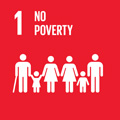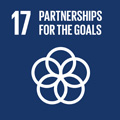- Docente: Ricardo Munoz Martin
- Credits: 6
- SSD: L-LIN/12
- Language: English
- Teaching Mode: Traditional lectures
- Campus: Forli
-
Corso:
Second cycle degree programme (LM) in
Specialized translation (cod. 9174)
Also valid for Second cycle degree programme (LM) in Interpreting (cod. 8060)
Learning outcomes
The student - has a working knowledge of the essential theoretical assumptions underlying research on translation, interpreting and intercultural studies - is familiar with the main methods for data collection and analysis in these fields - is able to apply methods and theoretical assumptions appropriately to specific case studies within one or more of the fields of interest - is able to describe the research process and product in written form, in a way that is coherent with the genre conventions of the research article, in English or Italian.
Course contents
The course offers a broad overview of the main research methods used in translation, interpreting and intercultural studies, with examples of recent developments in these fields. Participants will be introduced to the essential prerequisites and tools necessary to undertake independent research projects, mainly those leading to the design and writing of a Master's thesis or a PhD proposal.
The contents of the course are organized in two main lines. Line 1 presents the conceptual basis and the state of the art in different fields and approaches within the TIS. Line 2 focuses on practical research training and orientation.
The course can be carried out in two ways: in the first one (way A), half of the grade comes from group activities. This way is a better fit for students whose main objective is to excel in their master's thesis. In the second way (way B), the student is responsible for their own work and has no group work assignments; this line is recommended for students who think they may want to pursue a PhD later.
Week 1
Course overview and welcome
Ways of knowledge, types of research
Disciplines. Social sciences. Applied Sciences
Scientific communities
Requirements for the Master's thesis: expectations, guidelines and structure
Searching for paper and electronic information sources
Managing bibliographic references
Assignment 1: Compile a list of relevant indexed journals, leading publishers, databases.
Way B, Reading 1: Pym (2012)
Week 2
Development of Translation and Interpreting Studies (TIS)
Current research areas in TIS
Selecting a search topic
Aims, objectives, hypotheses. Planning the research
Identifying previous research/studies in a specific area
Assignment 2: Compile a list of master’s theses and PhD dissertatins at Unibo and other CIUTI universities.
Way B, Reading 2: Vandepitte (2013)
Week 3
Qualitative vs. quantitative research
Introspective research vs. observational research
Case studies, experimental vs. naturalistic environments
Assessing previous dissertations, theses and research projects
Conceptual maps for search questions and domains
Conducting an effective review of specific literature
Assignment 3: Choose a search theme and write a suitable title for it. Identify the notion of translation you will adopt and the kind of search it will be. Justify all of your choices.
WayB, Reading 3: Gile (2001)
Week 4
Introduction to research methods
Data collection methods and tools for translation and interpretation
Formulating preliminary questions and research issues
Selecting and developing a preliminary theoretical framework
Turning your research question into hypotheses
Assignment 4: Outline research methods in three empirical research reports.
Way B, reading 4: Halverson (2009)
Week 5
Research ethics
Replicability and reproducibility
Open science
Scientific communication: text types (IMRaD)
Research venues
Technical writing
Way A, Assignment 5a: Choose a team for the assignment of grade II.
Way B, assignment 5b: Search for 3 additional references that address the topics of readings 1–5.
Way B, Reading 5: Marco (2009)
Ways A and B: Turn in graded assignment I
Week 6
Gender studies
History of translation (and Translation Studies)
Literary translation
Didactics
Week 7
Socio-ethnographic methods
Text and corpus analysis
Conference Interpreting
Dialogue interpreting
Ways A and B: Turn in graded assignment IIa or IIb
Week 8
Statistical methods
Automatic translation and NLP
Audiovisual translation
Cognitive approaches
Week 9
Analyzing data
Using a spreadsheet to calculate data and generate descriptive charts, graphs and descriptive statistical indicators.
Discussing results
Rigorous abstraction and inference, caveats, and further research
Week 10
Academic writing
Style: Compile a list of phrases used in 5 journal articles to introduce previous studies, their topics, research methods, topics and results.
DIT Style norms
Preparation of oral presentations and accompanying scripts
Basics of scholarly public speaking and PowerPoint use
Readings/Bibliography
References
Bailey, Stephen. 2011. Academic writing. A handbook for international students, 3rd ed. London: Routledge.
Bhattacherjee, Anol. 2012. Social science research: Principles, methods, and practices. ISBN 978-1475146127. Available at https://scholarcommons.usf.edu/cgi/viewcontent.cgi?article=1002&context=oa_textbooks
Biel, Łucja, Jan Engberg, Rosario Martín Ruano, and Vilelmini Sosoni. 2019. Research methods in legal translation and interpreting. Crossing methodological boundaries. London: Routledge.
Bryman, Alan. 2012. Social research methods, 4th Ed. Oxford: Oxford University Press.
Hale, Sandra, and Jemina Napier. 2013. Research Methods in Interpreting. A Practical Resource. London: Bloomsbury.
Heard, Stephen B. 2012. The scientist's guide to writing. Princeton: Princeton University press.
Mellinger, Christopher, and Thomas Hanson. 2016. Quantitative research methods in Translation and Interpreting Studies. London: Routledge.
Rojo López, Ana María. 2013. Diseños y métodos de investigación en traducción. Madrid: Síntesis.
Serianni, Luca. 2012. Italiani scritti, 3rd ed. Bologna: Il Mulino.
Saldanha, Gabriella, and Sharon O'Brien. 2013. Research methodologies in Translation Studies. London: Routledge.
Williams, Jenny, and Andrew Chesterman. 2002. The Map – A Beginner’s Guide to Doing Research. Manchester: St Jerome.
Guest speakers may provide additional references tailored to their approach.
Readings for way B
Gile, Daniel. 2001. Useful research for students in T&I institutions. Hermes 26: 97–117.
Halverson, Sandra. 2009. Elements of doctoral training. The logic of the research process, research design, and the evaluation of research quality. The Interpreter and Translator Trainer 3 (1): 79–106.
Marco, Josep. 2009. Training translation researchers. An approach based on models and best practice. The Interpreter and Translator Trainer 3 (1): 13–35
Pym, Anthony. 2013. Research skills in translation studies: What we need training in. Across Languages and Cultures 14 (1): 1–14. DOI 10.1556/Acr.14.2013.1.1
Vandepitte, S.2013. Research competences in Translation Studies. Babel 59 (2): 125–148. DOI 10.1075/babel.59.2.
Teaching methods
The course requires the student to attend 70% of the course. Students are required to be active and participate in proposed exercises.
Assessment methods
The evaluation includes two mid-term activities (assignments I and II) and two final exams (assignments 3 and 4). Assignments 2 and 4 allow for two ways. Way B is designed for students who start the class with a clear notion of a project in mind.
Assignment I – Submission of an individual review of scholarly literature: from 1,000 to 2,000 words, worth 25%.
Students are expected to demonstrate their knowledge of their chosen contents and substantial academic writing skills by producing a well reviewed academic writing essay in the form of a critical literature review. This will require students to think critically about research in the chosen area.
Assignment IIa (way A) - Presentation of an initial, written, group research proposal worth 25%.
Students are expected to submit a draft proposal containing an introduction (contextualization and discussion of the topic, overview of the state of the art), goals, research question (and possible hypotheses), informants, materials and methods, caveats and potential for further research.
Assignment IIb (way B) - Submission of a discussion of reading assignments 1-5 plus the three texts located in classroom assignment 5b.
Assignment III - Presentation of an individual research proposal: between 2,000 and 3,000 words, worth 25% (written examination).
This assignment involves the submission of a well-developed research proposal that includes a clear statement of the research question(s); a well-argued justification for the research; the location of the proposed research in relation to prior studies in the area; a suitable research design; ways of analysis and potential conclusions, including including key assumptions and limitations of the project; and ethical considerations, if relevant, accompanied by core bibliography.
Assignment IVa - (way A) - Oral presentation of the group research proposal: 15-minute presentation, worth 25% (oral examination)
This assignment builds on the feedback students received for the first assignment, with the expectation that both the theoretical framework and the research methods sections will be improved and fine-tuned. Students are expected to be able to defend their choices with respect to the theoretical framework and research methods, thus demonstrating that they are at the forefront of the theoretical and research knowledge necessary to conduct translation or interpretation studies. In addition, students are expected to demonstrate that they are able to provide an effective research presentation.
Assignment IVb (Way B) - Oral presentation of a poster describing a PhD research project.
This assignment consists of presenting assignment III orally in front of an audience of students and the teacher, and engaging in a round of questions and answers with the audience.
Teaching tools
Lessons will take place in a classroom equipped with computer support and Internet connection.
Office hours
See the website of Ricardo Munoz Martin
SDGs



This teaching activity contributes to the achievement of the Sustainable Development Goals of the UN 2030 Agenda.
